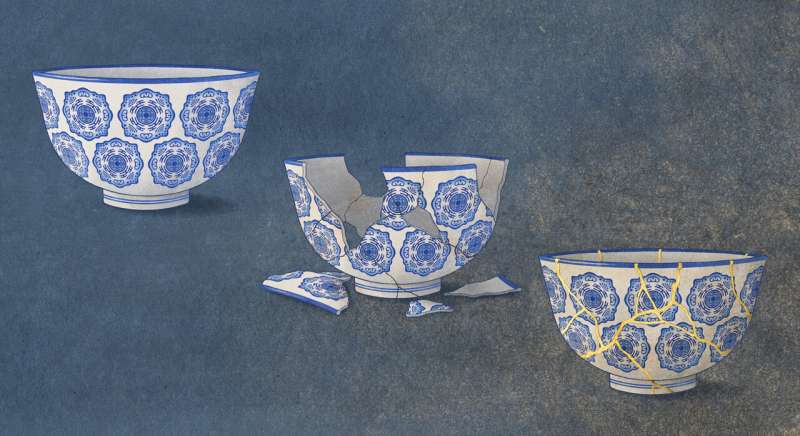This article has been reviewed according to Science X's editorial process and policies. Editors have highlighted the following attributes while ensuring the content's credibility:
fact-checked
peer-reviewed publication
trusted source
proofread
Damage to cell membranes causes cell aging, finds new study

Our cells are surrounded by a fragile membrane that's only 5 nanometers thick, 1/20 of a soap bubble. Cells are easily damaged by physiological activities, including muscle contraction and tissue injury. To cope with such damage, cells are equipped with mechanisms that can repair membrane damage to a certain degree.
Mechanical damage to the cell membrane was previously believed to trigger two simple cellular outcomes: recovery or death. In a new study, however, researchers have uncovered a third outcome—cellular senescence. The work appears in Nature Aging.
"When I started this project, I simply aimed to understand the repair mechanisms of damaged cell membrane," recalls Professor Keiko Kono, head of the Okinawa Institute of Science and Technology Membranology unit and senior author of the study, which involved multiple members from the unit, including Kojiro Suda, Yohsuke Moriyama, Nurhanani Razali and colleagues. "Unexpectedly, we ended up discovering that cell membrane damage, in a sense, switches cell fate."
The key to determining cell fate is the extent of damage and subsequent calcium ion influx. The thin cell membrane damage can be easily repaired, allowing the cells to continue cell division without any trouble. The highest level of cell membrane damage induces cell death. However, a middle level of cell membrane damage turns the cells into senescent cells several days later, even though membrane resealing seems successful.
Cancer cells divide unlimitedly. In contrast, non-cancerous normal cells have a limited capacity for cell division—around 50 times before division is irreversibly stopped, and the cells enter a state known as cellular senescence. Senescent cells are still metabolically active, but unlike young and healthy cells, they produce various secretory proteins that upregulate immune responses in both nearby tissues and distant organs. This mechanism can induce both beneficial and detrimental changes in our body, including acceleration of wound healing, cancer promotion, and aging.
During the last decade, numerous studies have reported that senescent cells exist in animal bodies, including humans, and that the removal of senescent cells can rejuvenate body functions in experimental animals. However, the cause of cell senescence in the human body remains a controversial topic.
"The gene expression profile and bioinformatics suggested that cell membrane damage explains the origin of senescent cells in our bodies, specifically the ones near damaged tissues," explains Professor Kono.
The best-established inducer of cellular senescence is repeated cell division. Many other stresses also induce cellular senescence in a laboratory setting, such as DNA damage, oncogene activation, and epigenetic changes. The long-standing dogma in the research field was that various stresses induce cellular senescence ultimately via the activation of DNA damage response.
However, the authors uncovered that cell membrane damage induces cellular senescence via a different mechanism that involves calcium ions and the tumor suppressor gene p53. These findings may contribute to developing a strategy to achieve healthy longevity in the future.
More information: Plasma membrane damage limits replicative lifespan in yeast and induces premature senescence in human fibroblasts, Nature Aging (2024). DOI: 10.1038/s43587-024-00575-6
Journal information: Nature Aging
Provided by Okinawa Institute of Science and Technology





















